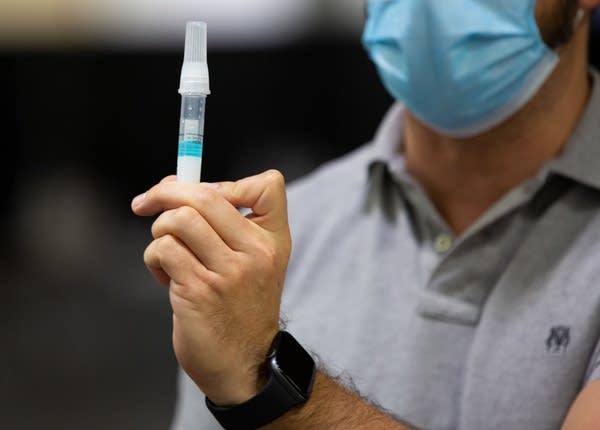U.S. move to shorten COVID-19 isolation stirs confusion, doubt

Shawn Baxley of Vault holds up a test tube at the testing center at the Minneapolis Convention Center in November 2020.
Kathryn Styer Martinez | MPR News 2020Go Deeper.
Create an account or log in to save stories.
Like this?
Thanks for liking this story! We have added it to a list of your favorite stories.


